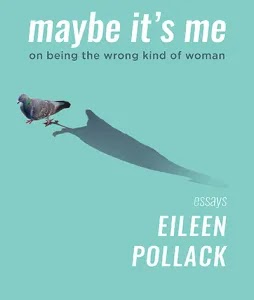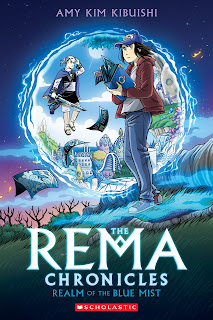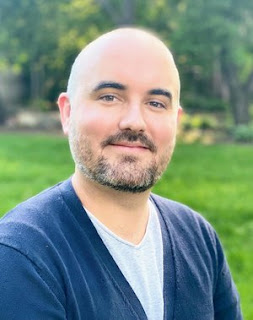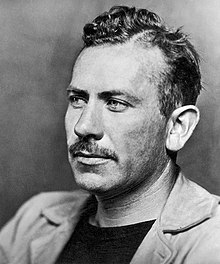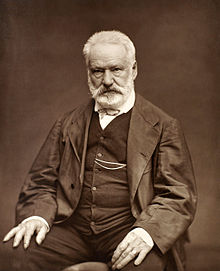Peter Docker is the author of the new book Leading from the Jumpseat: How to Create Extraordinary Opportunities by Handing Over Control. He also has co-written the book Find Your Why. He served for 25 years in the Royal Air Force, and has worked in a variety of industries including construction, mining, pharmaceuticals, and banking. A keynote speaker and facilitator, he is based in the UK.
Q: You begin your book with an anecdote
involving your own role in a potentially dangerous airplane situation that
explains the origin of the book's title. Can you say more about that incident?
A: My book’s title, Leading from the
Jumpseat, was inspired by an event that happened some years ago now when I was
a senior pilot and officer in the Royal Air Force.
I flew large passenger jets – about the
size of a 737 – and I had just certified a pilot called Calum to be a fully
qualified captain. This meant he would be responsible for the safety and
operation of the plane, crew and passengers, flying anywhere in the world.
We had stopped the night in San Francisco
and Calum was at the controls to fly us to Washington Dulles. I had planned to
be down the back of the aircraft with the other passengers, but Calum had asked
me to sit on the jumpseat for the taxi and take-off from San Francisco to help
look out for other aircraft during the morning “rush-hour” of departures.
The jumpseat is a seat on the flight deck
of most large passenger jets and is immediately behind the captain and
copilot’s seats. When seated there it’s possible to touch the pilots on their
shoulders, it’s that close. The jumpseat is usually empty, but crew members can
sit in there if necessary, such as when they’re hitching a ride home.
All was going well until immediately after
take off. At a height of only 500 feet we were faced with an emergency and
Calum was suddenly wrestling with the controls. Although I was not in the
pilot’s seat, what I chose to do in the moments that followed would affect
whether we, and the 140 people on board, survived.
I chose to do nothing.
I sat there calmly, with my hands in my
lap. At that moment, I didn’t need to be the leader. I needed to become a great
follower – to have Calum feel that I had his back – and allow him to do what he
had been trained to do. If I hadn’t had confidence in him to resolve the
situation, I would have had no business signing him off the day before as a
fully qualified captain.
In life, it’s inevitable that we will hand
over control at some stage. As the leader of a team, we will leave and move to
another team. As a CEO we will retire. As parents we will watch our kids grow up,
leave home and start to lead their own lives. Handing over control is
inevitable.
Jumpseat Leadership is all about
recognizing this inevitability and leading in such a way that we lift others up
so, when the time is right, they can take the lead and carry forward those
things we believe are really important.
Jumpseat Leadership is a higher form of
leadership since it’s not about increasing or retaining one’s own power; it’s
about empowering others. When we lead with this intention, it creates extraordinary
opportunities by transforming the capability of our team in a way that serves
us during normal times, in crisis, and when faced with the unknown.
Q: What do you see as the importance of
control in professional situations--and of handing over that control? And what
is the appropriate time to hand over that control?
A: Control is important in professional
situations, but often control is retained at too high a level – and focused on
the wrong things. The more senior we become, the more we need to be focused on
the context of the work we’re engaged in – the reason behind the work our
organization does, our vision or mission.
This is what I refer to as the “picture on
the puzzle box.” Our people are usually ideally placed to work out how to bring
those puzzle pieces together.
If we retain control by always being the
one who comes up with the answer, we become the constriction in the pipe – our
team only advances as quickly as our own knowledge allows. While it can feel
good to be the “go to person” who always has the solutions, it severely limits
the velocity of our team’s progress.
The British entrepreneur, Richard Branson,
takes this to the next level: “It’s all about finding and hiring people smarter
than you. Getting them to join your business. And giving them good work. Then
getting out of their way. And trusting them. You have to get out of the way so
you can focus on the bigger vision.”
And yet just handing over control to
others without equipping them first would be irresponsible.
For example, to certify Calum to fly as a
captain without any training would likely have been disastrous. Instead, he had
spent years training to become a pilot, then served a long apprenticeship as a
copilot on the specific type of aircraft he was flying that day, before
receiving around six months of further training and qualification to become a
captain.
Our organization had invested in him
because we wanted him to be able to lead in that role – so we could have many
captains to fly aircraft around the world to the standard we needed.
It’s the same in business: if our company
is totally dependent on one individual to lead and deliver what they do, it is
exceptionally limiting. Overcoming this dependency is at the heart of the
Jumpseat Leadership approach.
In his quote, Branson also points to
another vitally important aspect: trust. When we keep the picture on the puzzle
box very clear for everyone to see, and then invest in our people by training
them and giving them opportunity to grow within that context, trust begins to
emerge.
When Captain Chesley “Sully” Sullenberger
was faced with ditching his US Airways flight into the Hudson River barely six
minutes after take-off from LaGuardia Airport, he didn’t know each member of
his crew particularly well.
Indeed, it’s not unusual for airline crew
members to meet one another scarcely an hour before departure. And yet they
have all gone through the same training, committed to the same context of
keeping everyone safe, and so the trust is there for them to be able to work as
a team when an emergency suddenly occurs.
For Sully and everyone on board the
aircraft that day, it all ended well and the incident became known as The
Miracle on the Hudson. That would not have happened without trust being
present, and the trust would not have been there without training.
As well as training, trust is further
enhanced through building relationships. I had known Calum, and his family, for
some years before we were faced with that emergency. I’d seen him perform in
high-pressure situations before. I knew his character. I knew he was ready to
take the lead.
Importantly, Calum knew me, too. In the
moment, he knew I would have his back. Significantly, by choosing to invite me
to sit in that jumpseat, Calum demonstrated he had confidence in me to not
interfere or undermine his leadership – to be a great follower. A question for
all leaders is, would you be invited?
Q: In the book, you describe the role that
ego plays in various situations. What advice do you have for people dealing
with their own, or others’, ego?
A: Everything we do in life that is
important to us is driven by Fear or Love.
Fear is valuable when our life is in
danger. It helps us jump back and away from an ongoing car when trying to cross
the road. But fear is also triggered when we sense our livelihood, status or
reputation is under threat – a particular challenge in a business context.
In these circumstances, fear rarely serves
us well since it can show up as anger or meekness, or a view of the world
dominated by scarcity – a win/lose mentality that says we have to win at the
expense of others.
Above all, when we let fear drive us, this
is when ego can raise its head, when our focus becomes completely on self and
we close down thinking about others. The
trouble with ego is that it can become infectious, with those around us allowing
their own egos to take the lead too. And that’s when effective teamwork
diminishes rapidly.
The good news is, we always have a choice.
The choice is to recognize fear as a warning flag and to choose instead to be
sourced from love. Love in a business context is about seeing the world as a
place of possibility, rather than scarcity; of being in service of others,
rather than self; and leading with humble confidence rather than ego.
Humble confidence is when we are resolute
on where we’re going as a team or organization (the picture on the box), ready
to take the decisions that are needed, but importantly, willing to be curious
and listen to the input of others. What links fear and love is courage: courage
can’t exist without fear, but it can only be sustained by the love for
something.
So, when we feel ego starting to rise
inside of us, take a breath and recognize it as a warning flag and the
opportunity to choose to be driven by humble confidence instead. We can do this
by reconnecting to the picture on the box – the reason we’re doing what we’re
doing in the first place. When we are truly in service of others, ego will
begin to dissolve.
When we see ego arising in others, take a
moment to reflect on the fear behind the ego. We then have an opportunity to
break the chain and respond with humble confidence. When we do that, humble
confidence can become infectious too.
Q: Who do you see as the book's
readership, and what do you hope readers take away from the book?
A: I believe that everyone is capable of
extraordinary things, so anyone who shares that belief would benefit from
what’s in this book.
Whether we are starting out in life trying
to get clear on what’s really important to us (“Learning to fly”); feeling in
flow with our current work and starting to think about raising the bar (“Flying”);
just moved into our first management role (“Teaching others to fly”); or at the
stage of taking a step back for others to fully take the lead (“Leading from
the Jumpseat”), there will be value in the techniques I’ve shared.
What I’ve noticed is that we can be at the
stage of Leading from the Jumpseat in one aspect of our life (a CEO of a
business), while just Learning to Fly in another (taking up scuba diving or
being a parent). Leading from the Jumpseat is all about leading yourself and
others, and how to create the extraordinary opportunities that happen when we
are able to hand over control.
Q: What are you working on now?
A: Writing Leading from the Jumpseat has
helped me to really bring into focus everything I’ve learned about leadership over
several decades. I’m still practicing the techniques myself and I’m keen to
help others adopt them too.
So, as well as the keynotes and workshops
I currently deliver, my team and I are working on a Jumpseat Leadership Course
for business, together with a companion guide to help companies embed these
ideas in their workplace at their own pace.
There will also be a Consider This guide
that builds on the “how to” sections of the book in support of those who want
to put Leading from the Jumpseat into practice each day.
Q: Anything else we should know?
A: As human beings we don’t always get it
right. One aspect of Jumpseat Leadership is to give ourselves some grace when
we slip-up and wish we could have done better. It’s less about the single
events and more about the trend over time. And, above all, seeking to always
source our actions from a place of love, rather than fear.
--Interview with Deborah Kalb

